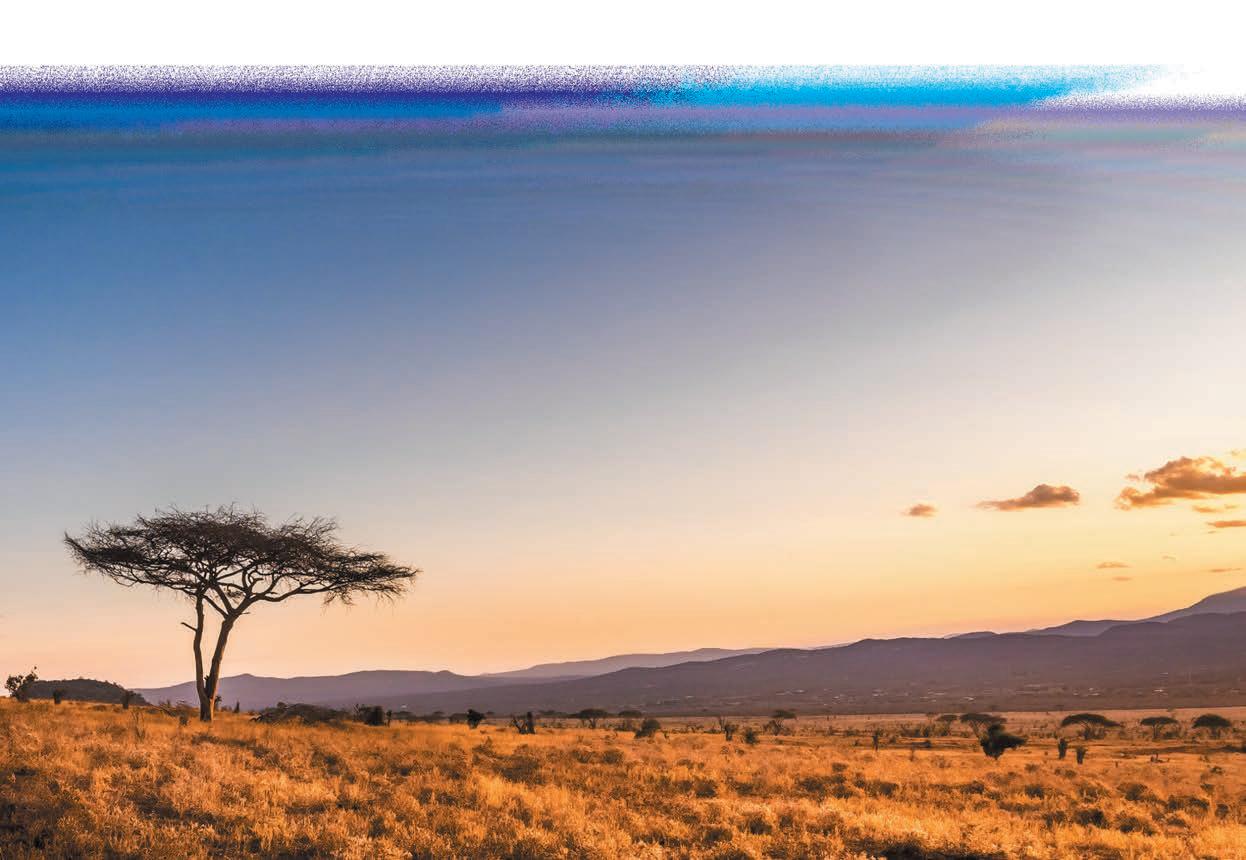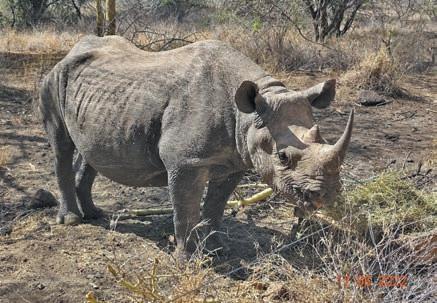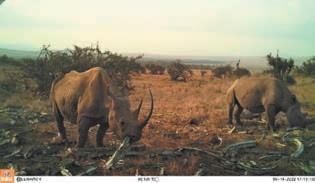
2 minute read
Kenya Feeding rhinos in a drought
Feeding rhinos in a drought
Every year, during the dry season, our Research Department conducts rhino body condition assessments, targeting the relatively old and lactating rhinos with the aim of introducing those affected onto a supplementary feeding programme. This year it’s been particularly dry, and we’re feeding rhinos to support them through the drought.
Advertisement
Kenneth Onzere | Rhino Monitoring Officer, Lewa Wildlife Conservancy
IMAGES LEWA WILDLIFE CONSERVANCY

Drought has made finding food particularly tough for rhinos like Kitui (above), who have lost body condition. The 2022 drought
The “short rains”, which usually come in November and December, were delayed but did provide some relief for us coming into the end of 2021.
But this wasn’t the case everywhere. Kenya’s northern region continued to experience drought— its fourth straight season of insufficient rainfall. The 2022 “long rains”, which usually fall between March and May, were expected to give some relief. Unfortunately, they also arrived late, leaving most of Kenya with low or no rainfall.
Lewa is located in the northern foothills of Mount Kenya, extending into the semi-arid region of northern Kenya. Drought has had a huge impact on our landscape and our wildlife. In mid-May this year, we restarted the feeding programme, after recording seven rhinos with poor body condition.
Six of these rhinos are lactating mothers, and one is an orphaned black rhino named Kitui (left). Kitui is a young black rhino that has required significant care since birth and lives in a smaller enclosure within Lewa. Like the other rhinos in the larger landscape, browse for Kitui has been depleted due to the drought. Despite targeting the group of six, many other rhinos have been seen consuming the supplementary feed.
Rhino condition and supplementary feeding
Using a scale of 1 to 5 (one indicating emaciation and five indicating obesity), our condition assessment follows a set of criteria, to produce a score for each animal. Ideally, every rhino would be between 3.5 and 5. Any rhino with a score below three is put onto the programme and food is left out for them during the drought, when it could otherwise be hard to come by.
Black rhinos are usually introduced to their supplementary feeds gradually. Euphorbia candelabrum and Euphorbia tirukali are the two species that black rhinos prefer to feed on. Once body scores have been recorded and poor-conditioned rhinos identified, piles of each plant are placed in strategic locations for them to find. After a few weeks, the rhinos establish a regular routine of visiting these sites and then we begin to add in lucerne (Medicago sativa), which is highly nutritious fodder. In contrast, rather than a gradual introduction, any underweight white rhinos are offered hay and lucerne as soon as supplementary feeding begins.
Without sufficient rain, the number of rhinos on the feeding programme will increase.
Every morning and afternoon, our Research Team, assisted by the General Security and Logistics Department, loads a tractor with hay, lucerne and euphorbia. They head out to the feeding sites previously identified and drop off the vegetation. Alongside monitoring by our rangers, camera traps are placed at each site, helping us to check up on every feeding rhino, and continually assess their health.











